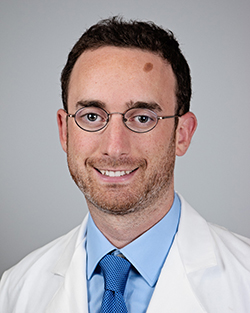This publication described the results from a web-based survey sent to members of the International Pediatric Nephrology Association (IPNA). Responses came from 71 countries representing multiple regions around the globe including Africa, Asia, Australia/New Zealand, Europe, Latin America, and North America. It is the first study that looks at this specific workforce from the perspectives of all regions of the world.

UNC Kidney Center Fellow Dr. Dorey Glenn published a study assessing global perceptions of the pediatric nephrology workforce in in the journal BioMed Central (BMC) Nephrology.
This study, which is co-authored by UNC’s Dr. Maria Ferris and Dr. William Primack, was initiated as a result of the interest of pediatric nephrologists at UNC who have observed a shortage of pediatric nephrology trainees entering fellowship programs.
“Within the US, there’s a crisis of the work force,” said Glenn, who cited a well-documented insufficiency of pediatric nephrologists and lack of trainees in the United States. Researchers wished to get a sense of how other regions compared.
While survey responses from North America supported previously published research on the shortage of pediatric nephrologists, one region’s responses painted a very different picture of the pediatric nephrology workforce: Australia and New Zealand.
The Australia/New Zealand region “stands apart from other regions in the sense of a perceived surplus of nephrologists,” reported Glenn, and that “many pediatric nephrologists have a hard time finding jobs after training.” Fifty-three percent of those who responded from Australia/New Zealand reported difficulties with this; this was also true for thirty-three percent of respondents from Latin America.
While respondents from Australia/New Zealand reported little difficulty with recruiting trainees into pediatric nephrology, respondents from North America and from Africa reported greater obstacles with trainee recruitment.
Some of the most noted obstacles to recruitment included a perceived lack of interest among trainees, perception of low salary, lack of government or institutional support, and job availability.
Regarding the low interest among trainees to pursue pediatric nephrology, Dr. Glenn speculated that there is a “perception of complexity to the field – people don’t feel they have a sense of mastery” of the kidney.
“I think we have a fairly interesting organ to talk about,” remarked Glenn.
Dr. Glenn shares his enthusiasm for the kidney with others; one way he has done this is through the creation of a board game, “Nephropoly,” which teaches medical students and residents aspects of kidney physiology. The game was selected as a finalist in the 2015 American Society of Nephrology Innovations in Kidney Education Contest.
“I want to show people that renal physiology isn’t scary,” he said.
Dr. Glenn, who is in his third year of fellowship training, is also pursuing a Master’s Degree in the UNC Public Health Leadership Program in the Health Care and Prevention Track. This study contributes towards Dr. Glenn’s graduate work.
Susan Hogan, PhD, who is an Associate Professor of Medicine at the UNC Kidney Center, noted the “accomplishment he made by bringing this to publication,” while Dr. Glenn was still in his first year of his research fellowship.
“He really sought ways to make this happen and to get to publication as efficiently as possible,” she added.
Dr. Glenn has received travel support from the American Society of Pediatric Nephrology (ASPN) to present the results of the study at the International Pediatric Nephrology Association conference in September, which will be held in Iguaçu, Brazil .
*
Read publication: “The global pediatric nephrology workforce: a survey of the International Pediatic Nephrology Association”
Authors include Sophie Ocegueda, Meaghan Nazareth, Yi Zhong, Adam Weinstein, William Primack, Pierre Cochat, and Maria Ferris.